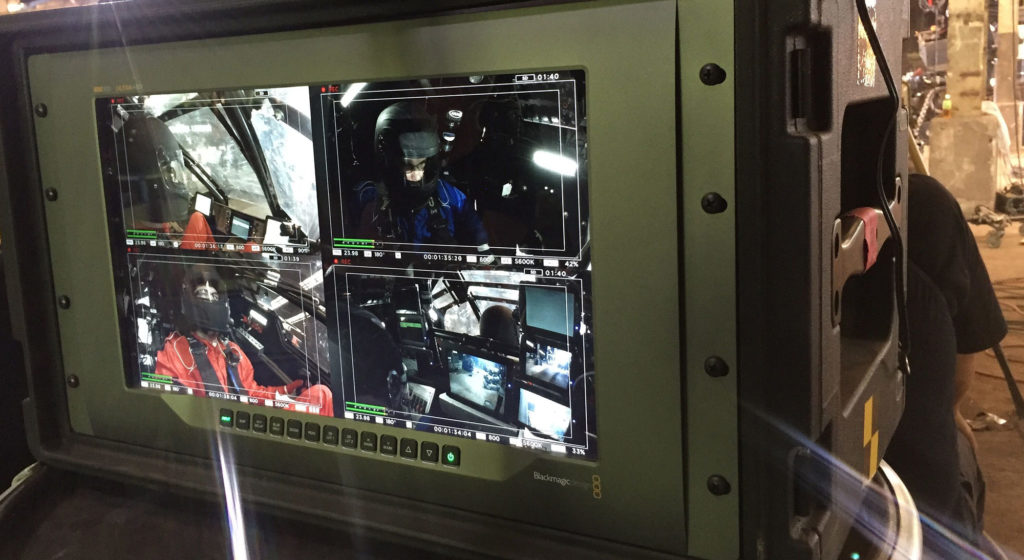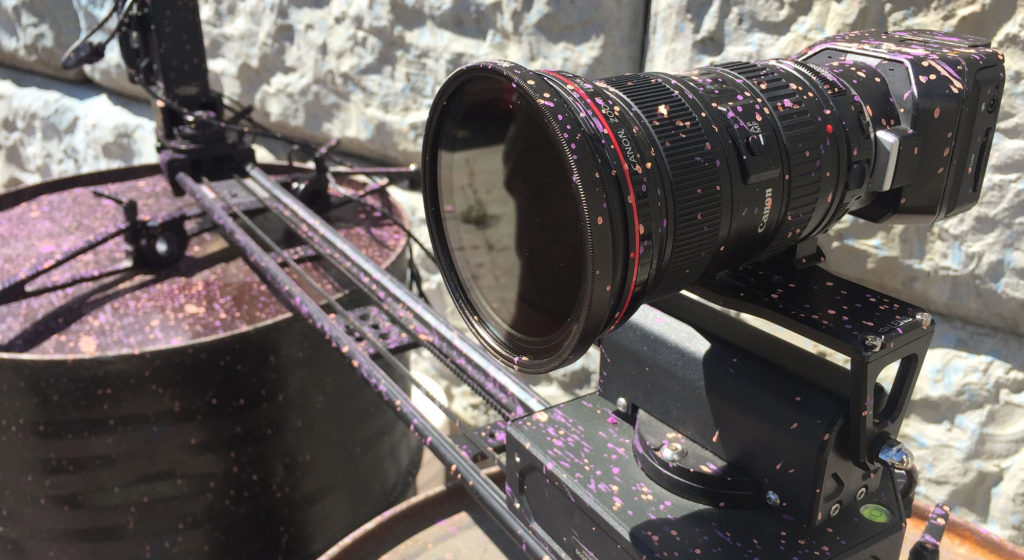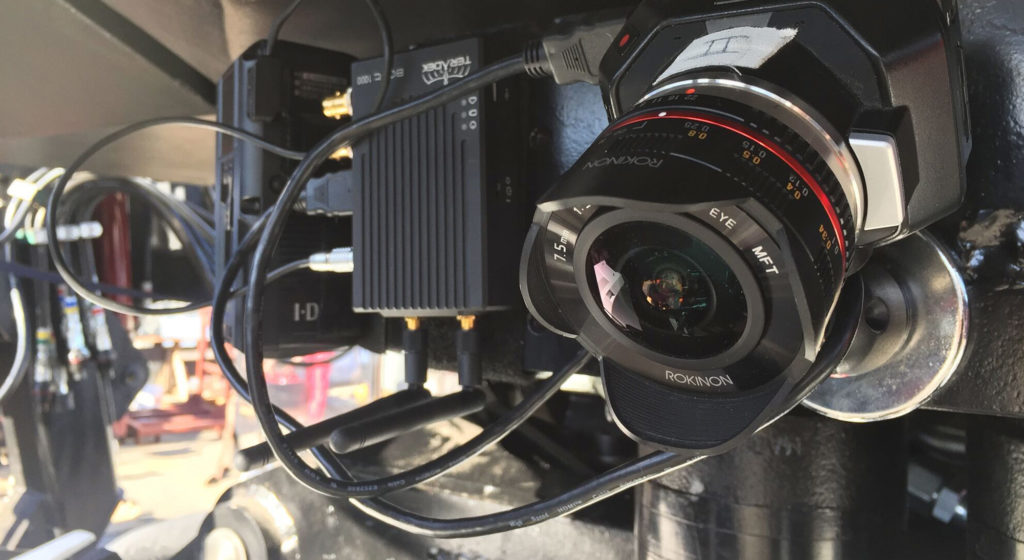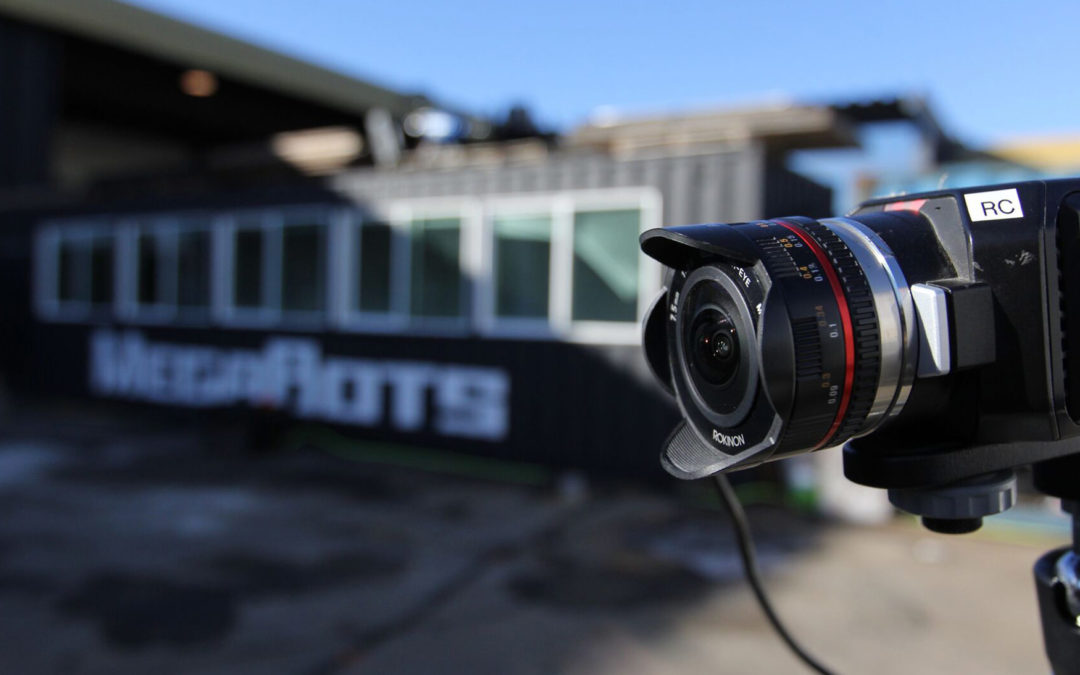Fremont, CA – October 26th, 2017 – Blackmagic Design today announced that its Micro Cinema Cameras and URSA Mini 4.6K digital film camera were used by DP Scott Sorensen to help chronicle a web series for the US-based robotics company MegaBots, Inc. MegaBots uses cutting-edge robotics technology to create giant 16-foot-tall, internally-piloted humanoid robots.
Two years ago, MegaBots challenged Japanese robotics company Suidobashi Heavy Industry to a giant robot duel, and the Japanese team accepted the challenge. In the first episode of the web series, MegaBots determined that its existing Mk. II robot would be unsuited for melee combat and decided that rather than modify the existing robot, it would be better to build a new robot from the ground up. As such, the MegaBots’ web series documented the R&D, testing and eventual creation of an entirely new robot called Eagle Prime. The series culminated in the Giant Robot Duel between MegaBots’ Eagle Prime and Suidobashi’s Kuratas.
“MegaBots has a strong following online. People really want to see the giant fighting robots of science fiction duking it out in real life. The goal of the web series was to show the audience a bit of what it takes to bring these machines to life,” said Sorensen. “At the beginning of the series, we sat down and outlined the major milestones of the build. Whenever a new part of the robot came online, we’d come in with a small crew and document the process. Each time the MegaBots team brought up a system of the robot, it was the first time the collected parts had been utilized in that way. In the event of a failure, we had to be prepared to document every possible outcome. That being the case, it was key that we had an arsenal of cameras to cover each event in 360 degrees.”

To capture every possible angle, Sorensen relied on six Micro Cinema Cameras for their compact size, expansion port and filmic look. “My primary reason for choosing the Micro Cinema Cameras was their expansion port. I knew that eventually, I would be rigging cameras inside the robots’ cockpits. With the expansion port on the cameras, I was able to roll and cut the cameras remotely via an RC plane transmitter and keep them charged via AC power provided by the robot,” he noted.
An URSA Mini 4.6K was also used several times throughout the shoot as a secondary over-cranked camera. “For several of the tests we filmed, I’d have the URSA Mini 4.6K recording slow motion, while I operated one of the Micro Cinema Cameras on a gimbal,” explained Sorensen.
Sorensen also used Blackmagic Design’s MultiView 4, SmartView 4K monitor and numerous Micro Converters HDMI to SDI as part of his workflow. During the duel, each robot was rigged with a series of Micro Cinema Cameras which were fed into the Micro Converters HDMI to SDI, which then went into two MultiView 4s. The MultiView 4s in turn fed to a wireless video solution that transmitted the split screen image to the SmartView 4K in the video village so Sorensen could confirm each camera responded to the remote triggering system. The remote camera triggering system consisted of a single RC transmitter that was paired with two receivers; one for each robot. From the receivers, Sorensen ran a single servo cable to each Micro Cinema Camera’s expansion cable. Each camera was assigned to its own switch on the transmitter.

“The remote viewing/control system in the bots was simple to set up with off-the-shelf parts. The system was a massive time saver on set, and it was reassuring to see that the cameras rolled through all the hits and crashes. It was beautiful,” said Sorensen.
Sorensen added, “Because the Micro Cinema Cameras are so tiny, it was simple to rig them inside the confined spaces of the cockpits. While we were testing with Eagle Prime, we also used the cameras locked off on c-stands and Magic Arms, a camera on a motion control slider, another on a gimbal and one on a jib.”
Sorensen also commented on the Micro Cinema Cameras’ durability. “While filming one episode, we were testing the robot’s ability to throw 55 gallon drums. In a stroke of massive bad luck, a wayward barrel came straight down onto a Micro Cinema Camera rigged on a motion control slider. The drum sheared the lens clean off, but did only minor damage to the slider and did nothing at all to the camera. They’re impressively durable, those little cameras,” he said.

About Blackmagic Design
Blackmagic Design creates the world’s highest quality video editing products, digital film cameras, color correctors, video converters, video monitoring, routers, live production switchers, disk recorders, waveform monitors and real time film scanners for the feature film, post production and television broadcast industries. Blackmagic Design’s DeckLink capture cards launched a revolution in quality and affordability in post production, while the company’s Emmy™ award winning DaVinci color correction products have dominated the television and film industry since 1984. Blackmagic Design continues ground breaking innovations including 6G-SDI and 12G-SDI products and stereoscopic 3D and Ultra HD workflows. Founded by world leading post production editors and engineers, Blackmagic Design has offices in the USA, UK, Japan, Singapore and Australia. For more information, please go to www.blackmagicdesign.com.






